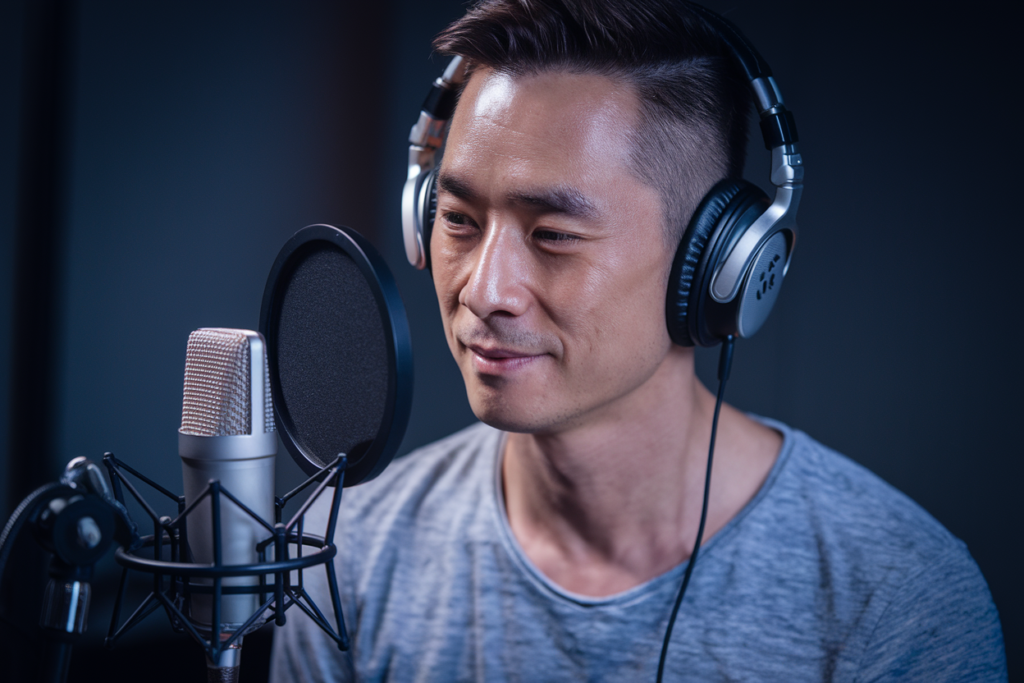Key Takeaways
- Importance of Voice Talent Selection: Choosing the right voice actors is crucial for creating emotional connections and ensuring characters resonate with audiences.
- Challenges in Translation Quality: Literal translations often fail to capture the nuance and emotion of original scripts, so using skilled translators is essential for maintaining clarity and engagement.
- Cultural Adaptation Issues: Adapting idioms and humor to suit local cultures can prevent misunderstandings and enhance relatability, highlighting the need for cultural consultants during the dubbing process.
- Technical Precision Matters: Proper audio synchronization and sound quality are vital; discrepancies can break immersion, making attention to detail imperative during recording sessions.
- Learning from Case Studies: Analyzing notable dubbing failures reveals common pitfalls—such as mismatched tones or poor cultural adaptations—that impact viewer satisfaction and narrative effectiveness.
Ever wondered why some Chinese dubbing projects miss the mark? It’s a common issue that can turn an engaging story into a confusing mess. From mismatched voice tones to cultural nuances getting lost in translation, these problems can frustrate both creators and viewers alike.
You might think it’s just about translating words, but there’s so much more at play. The art of dubbing involves capturing emotions and delivering context while staying true to the original content. When this balance falters, audiences feel disconnected. Let’s dive into the key challenges facing Chinese dubbing projects and explore how they impact storytelling in today’s global entertainment landscape.
Overview of Chinese Dubbing Projects
Chinese dubbing projects play a crucial role in the globalization of media and entertainment. These projects involve replacing the original audio track with a translated voiceover, allowing non-Chinese speaking audiences to access content. However, several challenges arise during this process.
Voice talent selection becomes essential for ensuring the dubbed version resonates with viewers. The right voice actor can bring characters to life, but mismatched tones or emotional delivery often disrupts the viewing experience. For instance, if a voice artist fails to capture a character’s essence, audiences might feel disconnected from the story.
Cultural nuances also pose significant hurdles. Translating dialogue isn’t just about words; it involves adapting idioms and expressions that may not have direct equivalents in Chinese culture. This loss of cultural context can lead to misunderstandings or diminish emotional impact.
Moreover, technical aspects such as timing and synchronization become vital. A well-executed voice over must align seamlessly with lip movements and background sounds. Any discrepancies here can break immersion, causing viewers to notice flaws instead of enjoying the storyline.
Successful Chinese dubbing projects require careful attention to various factors like talent selection, cultural adaptation, and technical precision. Overcoming these challenges ensures that audiences engage fully with content while preserving its original intent.
Common Problems Faced
Dubbing projects in China encounter several challenges that can impact the final product. Understanding these issues helps ensure a more effective voiceover experience.
Quality of Translation
Translation quality remains a critical concern in dubbing. Literal translations often miss the nuance and emotion of the original script, leading to disjointed dialogue. Inaccurate translations can confuse audiences, detracting from their engagement with the story. To address this, collaborating with skilled translators who understand both languages and cultural contexts is essential. This approach ensures that translated scripts convey emotions authentically while maintaining clarity.
Cultural Adaptation Issues
Cultural adaptation poses significant hurdles for Chinese dubbing projects. Idioms, references, and humor may not translate well across cultures, resulting in misunderstandings or loss of context. Adapting content requires a deep understanding of cultural nuances to resonate with viewers effectively. When voice actors deliver lines that don’t connect culturally, it disrupts immersion and emotional investment in the narrative. Therefore, involving cultural consultants during the adaptation process enhances relatability for local audiences.
Voice Acting Challenges
Selecting appropriate voice talent proves vital in successful dubbing projects. Voice actors must match character personalities while delivering compelling performances that evoke emotions akin to those intended by the original creators. Mismatched tones or styles can alienate viewers and weaken character connections. Ensuring voice actors possess not only vocal skills but also an understanding of character motivations significantly enhances storytelling effectiveness. Engaging experienced voice artists familiar with diverse genres could lead to more authentic portrayals and greater audience satisfaction.
By addressing these common problems through careful translation quality management, cultural sensitivity practices, and strategic casting choices within your dubbing projects, you enhance overall viewer engagement while preserving artistic integrity.
Technical Aspects
Technical elements play a crucial role in the success of Chinese dubbing projects. When executed correctly, these aspects enhance the overall viewing experience and ensure that audiences remain engaged with the content.
Audio Synchronization Difficulties
Audio synchronization presents significant challenges in dubbing. It’s essential for voiceovers to match lip movements, timing, and emotional beats of the original performance. Mismatched audio can distract viewers and break immersion. Achieving perfect synchronization requires meticulous attention to detail during recording sessions. Sometimes, even minor discrepancies can lead to a jarring experience for the audience. Voice actors must deliver lines with precise timing to align with on-screen actions, which often means adjusting their pacing or inflection during recordings.
Sound Quality Concerns
Sound quality is another critical factor impacting dubbing projects. Poor audio quality can detract from performances by voice talent and make dialogues sound unnatural or unclear. Ensuring high-quality recordings involves using professional equipment and skilled technicians who understand acoustics and editing techniques. Background noise, inconsistent volume levels, or echo effects can all compromise audio integrity. Clean sound captures allow voice artists’ performances to shine through without distraction, making it easier for audiences to connect with characters on screen.
By addressing these technical issues effectively, you create a more immersive experience for viewers while enhancing the overall quality of your dubbing projects.
Case Studies of Notable Dubbing Failures
Several notable dubbing failures highlight the complexities involved in Chinese dubbing projects. These examples reveal common pitfalls that can derail a production, impacting audience engagement and overall reception.
“Kung Fu Panda” (2016 Release)
In the 2016 release of “Kung Fu Panda,” the voiceover talent chosen for key characters received criticism for their delivery. While the original performances were energetic and engaging, the dubbed version featured voice actors whose tones felt misaligned with the characters’ personalities. This mismatch led to a diminished emotional connection, as viewers struggled to relate to characters they previously adored in their original form.
“The Lion King” (Chinese Version)
The Chinese version of Disney’s “The Lion King” faced backlash due to cultural adaptation issues. Certain idioms and jokes didn’t translate well, leading to confusion among younger audiences unfamiliar with Western references. The lack of cultural context diluted comedic moments that resonated with international viewers. Involving cultural consultants could have enhanced relatability, ensuring humor landed appropriately without losing its essence.
“Frozen II” (Mandarin Dub)
In “Frozen II,” technical aspects also played a crucial role in its reception. Audio synchronization issues disrupted immersion during pivotal scenes. Viewers noticed inconsistencies between character lip movements and dialogue delivery from voice actors—an oversight that detracted from an otherwise captivating story. Meticulous attention to detail is essential; even minor mismatches can pull audiences out of a cinematic experience.
“Avatar: The Last Airbender” (Animated Series)
The animated series “Avatar: The Last Airbender” encountered problems with voice talent selection in its Mandarin dub. Some characters lacked distinct voices that matched their personalities, resulting in viewer disengagement. A strong choice of voice artists who could convey emotions effectively would have added depth to character portrayals, enhancing audience attachment.
“Despicable Me 3” (Chinese Dub)
“Despicable Me 3” experienced challenges related to translation quality as well. Key lines lost their punch due to poor adaptations, leaving audiences unable to appreciate humor fully. Collaborating closely with skilled translators ensures clarity while maintaining the spirit of original dialogues—an important factor for successful dubbing projects.
These case studies underscore the multifaceted nature of dubbing in China and illustrate how various elements—voice talent selection, cultural adaptation, and technical execution—can impact a project’s success or failure significantly.
Conclusion
Navigating the complexities of Chinese dubbing projects is no small feat. You need to consider voice talent selection cultural nuances and technical precision to create a resonant experience for viewers. Every detail matters from ensuring emotional authenticity in voice performances to achieving perfect audio synchronization.
By addressing these challenges head-on you can enhance audience engagement and appreciation for the content. The right approach not only preserves the original story but also fosters a deeper connection with diverse audiences around the globe. Embracing these elements will set your dubbing projects apart in an increasingly competitive landscape.
Frequently Asked Questions
What challenges do Chinese dubbing projects face?
Chinese dubbing projects encounter several challenges, including mismatched voice tones, lost cultural nuances, and the difficulty of conveying emotions authentically. These issues can detract from the storytelling experience and affect audience engagement.
Why is voice talent selection important in dubbing?
The right voice actor significantly enhances character portrayal and emotional delivery. Mismatched tones or styles can disrupt viewer connection, making it essential to choose voice talents that align with character personalities.
How does cultural nuance impact dubbing?
Cultural nuances are crucial in dubbing because idioms and expressions may not translate directly. This requires careful adaptation to ensure local audiences understand the context without losing meaning, often necessitating input from cultural consultants.
What technical aspects are vital for successful dubbing?
Key technical aspects include audio synchronization with lip movements and emotional beats of the original performance. High-quality recordings using professional equipment are necessary to maintain clarity and immersion during viewing experiences.
Can you give examples of notable dubbing failures?
Notable failures include “Kung Fu Panda,” “The Lion King,” and “Frozen II,” where mismatched voice talent, poor cultural adaptation, or technical execution hampered audience engagement. These cases highlight the complexities of effective Chinese dubbing projects.







